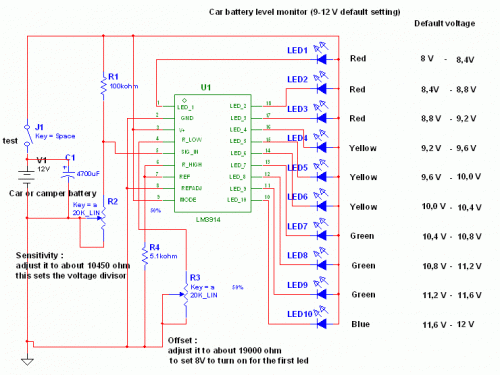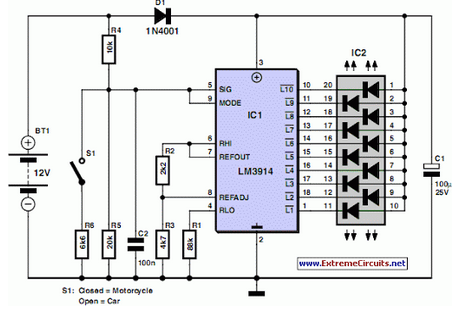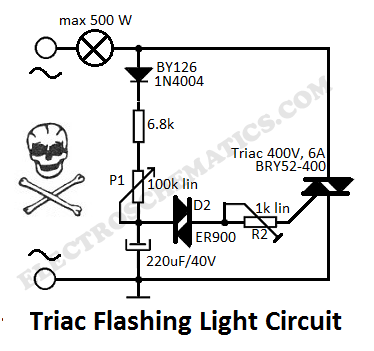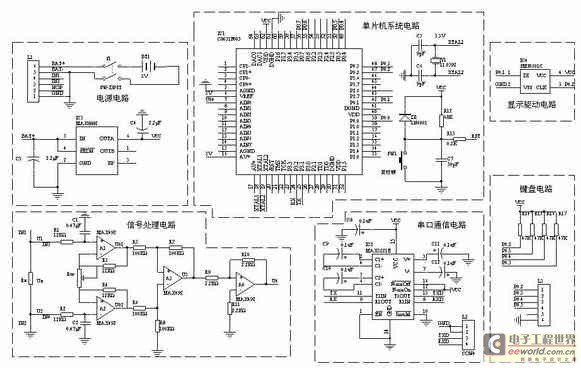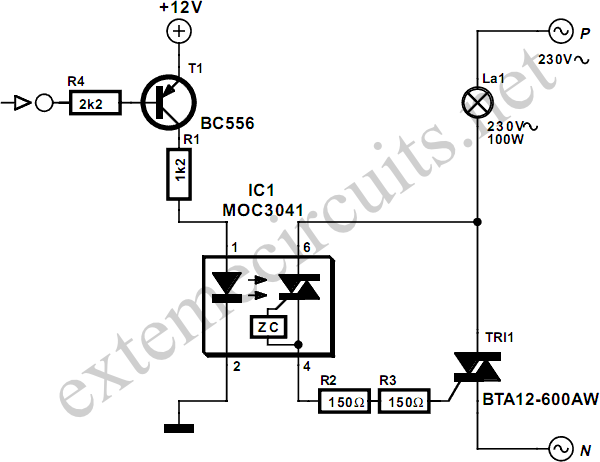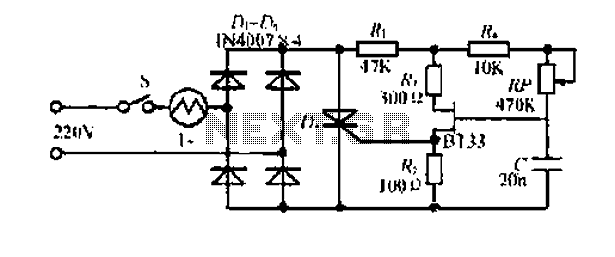
Thyristor / TRIAC Tester
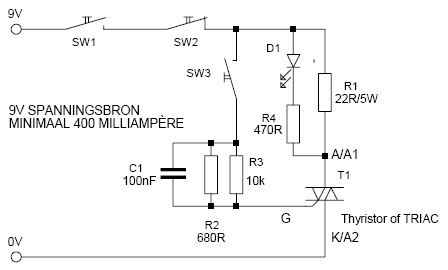
This is a simple but effective thyristor TRIAC tester. Operation at a good thyristor/triac: LED lights when SW3 is pressed. LED turns off when SW2 is pressed. If this occurs, the thyristor/triac is OK. Tip: Hirschmann clips for the tested thyristor/triac connection, including these quotation terminals. The supply voltage is 9V, with a minimum current of 400mA. More: Ideally, a lab power supply is used because it determines the holding current. Never use a 9V battery (6F22). SW1 = On/Off switch Conrad 701343-12 SW2 = pulse switch - normally closed Conrad 701114-12 SW3 = pulse switch - make Conrad 701113-12 R1 = 22Ω - 5W R2 = 680Ω R3 = 10kΩ R4 = 470Ω D1 = LED - red, 20mA C1 = 100nF T1 = To Test SCR/TRIAC 3 measurement terminals Hirschmann, Conrad 138487-12 or 138495-12
The thyristor TRIAC tester circuit is designed to assess the operational integrity of thyristors and TRIACs, utilizing a straightforward mechanism to indicate their functionality. The circuit operates with a supply voltage of 9V, requiring a minimum current of 400mA, which is ideally sourced from a laboratory power supply for precise control over the holding current. This ensures that the tester can adequately evaluate the components without the limitations associated with a standard 9V battery.
The core components of the circuit include three switches: SW1, SW2, and SW3. SW1 serves as the main power switch to turn the circuit on or off. SW2 is a normally closed pulse switch that, when activated, will cut off the current flow, causing the LED indicator (D1) to turn off if the tested component is functioning correctly. SW3 is a momentary switch that, when pressed, allows current to flow through the circuit, illuminating the LED if the component under test is operational.
Resistors R1, R2, R3, and R4 are strategically placed to limit current and set the appropriate biasing for the LED and the testing circuit. R1, rated at 22Ω and 5W, is critical for managing the power dissipation in the circuit, while R2 (680Ω), R3 (10kΩ), and R4 (470Ω) help to establish the necessary voltage levels for proper operation. Capacitor C1, valued at 100nF, serves to filter out any noise in the power supply, ensuring stable operation.
The tester also incorporates three Hirschmann measurement terminals, which provide a secure connection to the thyristor or TRIAC being tested. These terminals are essential for maintaining a solid connection during the testing process and are sourced from Conrad components (138487-12 or 138495-12).
Overall, this thyristor TRIAC tester circuit provides a reliable means for evaluating the performance of these semiconductor devices, ensuring that they can be tested effectively in a variety of applications.This is a simple but effective and thyristor TRIAC Tester. Operation at a good thyristor / triac: LED lights when SW3 is pressed. LED turns off when SW2 is pressed. If this occurs, the thyristor / triac OK. Tip: Hirschmann clips for the tested thyristor / triac connecting, including this quotation terminals. The supply voltage is 9V, with a minimum current of 400mA. Ideally, a labvoeding because it determines the holding current can be. Never use a 9V battery (6F22). SW1 = On / Off switch Conrad 701343-12 SW2 = pulse switch - normally closed Conrad 701114-12 SW3 = pulse switch - make Conrad 701113-12 R1 = 22? - 5W R2 = 680? R3 = 10k? R4 = 470? D1 = LED - red, 20mA C1 = 100nF T1 = To Test SCR / TRIAC 3 measurement terminals Hirschmann, Conrad 138487-12 or 138495-12
🔗 External reference
The thyristor TRIAC tester circuit is designed to assess the operational integrity of thyristors and TRIACs, utilizing a straightforward mechanism to indicate their functionality. The circuit operates with a supply voltage of 9V, requiring a minimum current of 400mA, which is ideally sourced from a laboratory power supply for precise control over the holding current. This ensures that the tester can adequately evaluate the components without the limitations associated with a standard 9V battery.
The core components of the circuit include three switches: SW1, SW2, and SW3. SW1 serves as the main power switch to turn the circuit on or off. SW2 is a normally closed pulse switch that, when activated, will cut off the current flow, causing the LED indicator (D1) to turn off if the tested component is functioning correctly. SW3 is a momentary switch that, when pressed, allows current to flow through the circuit, illuminating the LED if the component under test is operational.
Resistors R1, R2, R3, and R4 are strategically placed to limit current and set the appropriate biasing for the LED and the testing circuit. R1, rated at 22Ω and 5W, is critical for managing the power dissipation in the circuit, while R2 (680Ω), R3 (10kΩ), and R4 (470Ω) help to establish the necessary voltage levels for proper operation. Capacitor C1, valued at 100nF, serves to filter out any noise in the power supply, ensuring stable operation.
The tester also incorporates three Hirschmann measurement terminals, which provide a secure connection to the thyristor or TRIAC being tested. These terminals are essential for maintaining a solid connection during the testing process and are sourced from Conrad components (138487-12 or 138495-12).
Overall, this thyristor TRIAC tester circuit provides a reliable means for evaluating the performance of these semiconductor devices, ensuring that they can be tested effectively in a variety of applications.This is a simple but effective and thyristor TRIAC Tester. Operation at a good thyristor / triac: LED lights when SW3 is pressed. LED turns off when SW2 is pressed. If this occurs, the thyristor / triac OK. Tip: Hirschmann clips for the tested thyristor / triac connecting, including this quotation terminals. The supply voltage is 9V, with a minimum current of 400mA. Ideally, a labvoeding because it determines the holding current can be. Never use a 9V battery (6F22). SW1 = On / Off switch Conrad 701343-12 SW2 = pulse switch - normally closed Conrad 701114-12 SW3 = pulse switch - make Conrad 701113-12 R1 = 22? - 5W R2 = 680? R3 = 10k? R4 = 470? D1 = LED - red, 20mA C1 = 100nF T1 = To Test SCR / TRIAC 3 measurement terminals Hirschmann, Conrad 138487-12 or 138495-12
🔗 External reference
